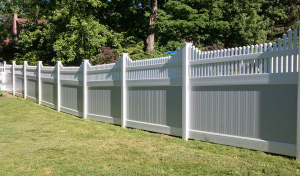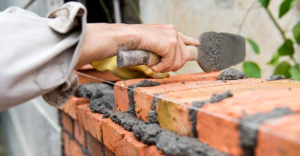Fences and gates are both outdoor products that can be used to enhance your home’s aesthetic. However, there are a few key differences between the two that you should keep in mind.
Fence, also known as a receiver or a pawnbroker, is a person who receives stolen property for sale. She often disassembles goods before selling them to lessen their value and risk of detection by police.

Fences are more versatile than gates and can be designed to suit the property. They can do anything from protecting a home’s private property to adding unique decorative elements to a yard. Fences can also provide more security than gates, especially if they are tall enough.
Prices thieves pay for stolen goods depend both on norms and on legitimate market rates. Vulnerable sellers may receive a lower price, while professional thieves can command much higher prices.
A fence can do many things for you, including privacy and security. However, to be effective and long-lasting, it must be built properly. This means that careful planning and preparation are needed before construction begins. The process includes marking property boundaries, assessing soil conditions, and clearing obstructions. Then, a professional fence company can begin constructing the fence to ensure that it functions as intended and meets all local building codes.
The first step in preparing the site is to assess the terrain and determine its suitability for a fence. This process involves examining the landscape, measuring the area, and taking into consideration factors like soil type, climate conditions, and the recommended foundation type for your project. It is also important to identify any potential issues that could arise during construction, such as groundwater presence and slope.
Once the site has been assessed, it is time to mark the boundary of your property. This is essential because it ensures that your fence is constructed within the legal limits of your land and will not encroach on neighboring properties. This can be done by consulting a property survey or plot plan, which you should have received with your deed or as part of your home purchase.
Once the fence line has been marked, it is important to clear away any obstacles that may hinder the installation process. This includes removing large rocks, tree stumps, overgrown plants, and any existing fence that needs to be taken down. It is also a good idea to treat any wooden posts with a wood preservative or sealant to protect them against moisture and the elements.
Digging the Post Holes
Whether you’re fencing a 5-acre hobby farm to keep livestock in and predators out or simply sprucing up the yard, it takes time, patience, and the right tools to ensure a successful fence project. Regardless of the type of fence you’re installing-electric, welded wire for livestock, or even just decorative wooden posts-one common denominator is that all fences require strong and sturdy post holes to support the structure. Digging these holes correctly can make or break a fence’s overall strength and durability.
Effective digging of post holes starts with precise planning and marking the area to be dug with spray paint or stakes. Using the correct tools like post hole diggers can significantly aid in this task as well, especially when dealing with difficult or rocky ground conditions. The ideal post hole depth and width is determined by the type of soil, local weather conditions, and the overall weight and structural design of the fence.
For example, sandy soils might require deeper and wider holes than clay or rocky soils, while areas with high wind levels might demand deeper and more stable posts to resist upheaval due to the constant strain of strong winds. Additionally, the type and construction of the fence will play a role in these factors as heavier and more robust fences often require more profound and sturdier posts.
The last thing you want to deal with after digging your fence posts is frost heaving, which occurs when the earth freezes and thaws repeatedly. This creates tremendous pressure that can upheave and displace the fence posts, so it’s important to bury your posts at least three feet deep to prevent this issue.
Installing the Posts
When it comes to installing a fence, the method used to secure the posts is crucial for the overall stability and durability of the structure. Many people opt for cementing the posts into the ground, but there is a growing recognition that pounding posts offers significant advantages over this method.
Once the site is cleared and prepared, it’s time to dig the holes for the posts. The depth and spacing of the posts is important for stability. Generally, the posts should be buried at least a third of their length in the ground and spaced 6 to 8 feet apart. Local building codes may also require a specific depth for the posts, so it’s important to check with your local authorities before digging.
It is important to use high-quality, pressure-treated wood for the posts. This will ensure that the posts last and are resistant to damage from weather. Depending on your climate, you may want to add gravel or concrete in the bottom of the hole to prevent water accumulation that can lead to post rot.
If you are using concrete to anchor the posts, it’s a good idea to pour it a few days in advance of installing the actual fence. This gives the concrete a chance to set and settle, which can help prevent it from shifting or collapsing under the weight of the fence.
It’s a good idea to have an assistant when setting the first few posts to make sure they are plumb and perfectly aligned with one another. Having someone to help you with this can also save time. Once the first few posts are set, it’s a good idea to run a string from each end to help you line up the rest of the fence.
Attaching the Post Caps
Post caps are a crucial component of a fence that many homeowners overlook. They don’t just add an ornamental element to your fencing, but they also play a key role in the longevity and maintenance of the entire fence installation.
Fence post caps protect the vulnerable end of the wooden posts from water penetration caused by wet weather conditions. Without a cap, the wood at the top of the wooden posts will be exposed and may become damaged by mildew or rotting, which will significantly reduce the lifespan of the wooden fence itself.
When properly installed, post caps help to minimise this kind of damage, reducing the frequency and extent of required maintenance work. This also helps to prevent unwanted splinters and cuts that can often occur as a result of wood weathering and moisture absorption.
Post caps come in a variety of different styles and materials, making them suitable for virtually any style of fence. Wooden post caps are common and can be stained or painted to suit the aesthetic of the property, whilst vinyl post caps are a more modern alternative that avoids the problems associated with traditional wooden posts, such as rot, cracking, and moss growth.
Glass or solar post caps are an alternative option that use sunlight to light the area around the fence, resulting in a cost-effective and low-maintenance solution for property owners. They are available in a range of sizes and designs, with some even featuring decorative elements to provide an extra touch of flair and sophistication.
Finishing the Fence
A wood fence can have many different types of finishing touches. This includes a kick board and mud boards, which help keep the pickets away from the ground to prevent moisture from rotting the wood. Also, a trim board can be added to the bottom of the fence for a clean and finished look. This helps to hide the lag screws and other hardware used to install the fence panels.
Painting is a popular choice for fence finishing. However, paint peels easily, so it requires a lot of maintenance and upkeep to look good. Staining is a better option for a long-lasting finish. It is available in a variety of colors, and it protects the wood from the elements, including the sun’s harsh UV rays.
